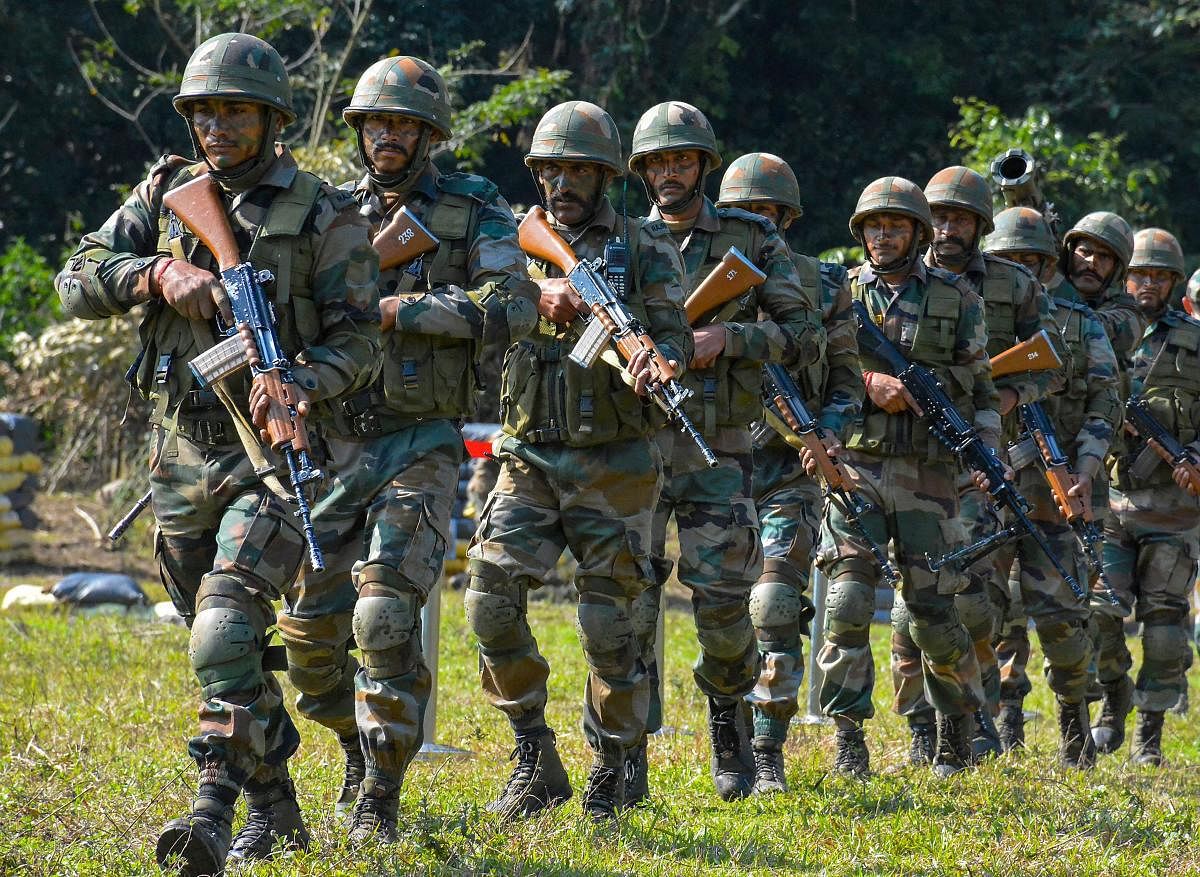
Elections after elections, the Indian “soldier” is getting appropriated towards political usage and purposes. This unwarranted invocation leads to a natural fallout of casual spin-doctoring, falsification and even contextualisation of facts to suit a certain political narrative. However, unlike the nature of civilian discourse and impulses, the Indian Armed Forces have a system of linear regimentation and “accommodation” that have enabled them to accept, internalise and adhere to a certain apolitical script of the past, without political angularities, pejoration or preferences.
Unlike the neighbouring countries, the Indian Armed Forces have practised the constitutionally mandated “civilian supremacy over the military,” even though the reciprocal dignity of the apolitical existence has not been maintained by the politicos in recent times.
The operational, cultural and psychological moorings of the Indian Armed Forces do not necessarily mirror the pace and regressions of societal evolution. The “barrackised” nature of military cantonments and the relatively insulated existence, ensures the retention of age-old elements, motifs and default instincts. Often, these ideas express themselves in symbolic and contextual ways that could be considered outdated, irrelevant or even politically incorrect in their literal interpretation outside of the “uniformed” fraternity.
However, these time-tested systems, classifications and institutional codes ensure that the Indian Armed Forces retain their professional efficacy and their famed, “kinetic” abilities.
Besides the glaring historical inaccuracies, the recent Karnataka Assembly elections posited the two legendary soldiers as “heroes of the state” — except that in cantonments, General Thimayya is known as a proud “Kumaoni Officer,” whereas, Field Marshal K M Cariappa a “Rajput Officer,” their military “home” identities were different from their native identities.
Unknown to the political understanding, the “Kumaoni” denomination includes with pride the irrepressible Nagas from the Northeast and the gallant Ahirs from Haryana and Uttar Pradesh.
Similarly, Field Marshal Cariappa’s “Rajput” Regiment subsumes a bouquet of castes, religions and regional compositions like Rajputs, Gujjars, Brahmins, Muslims, Bengalis etc. Incidentally, this move towards an “All-India-composition” within “Rajputs,” is singularly attributable to Field Marshal Cariappa. “Kipper” as Field Marshal Cariappa was known as, was also the force behind the “Brigade of Guards,” another lofty “All-India” conceptualisastion that is perhaps unknown to the politicians ostensibly professing, yet willy-nilly closeting and narrowing the expansive and “inclusive” outreach of the two military legends, towards provincial relevance, only.
In a dangerously polarised environment of absolutism, the syncretic culture within the cantonments is thankfully at odds with the civilian domain. There are unsaid nuances, understanding, and acceptance of history with all its glories, failings and imperfections. The Armed Forces do not selectively disown facts, conjure myths or have any political agenda – the dark year of 1962 is accepted as a hard reality, however, even in 1962, the institution chose to celebrate the raw courage of Major Shaitan Singh and Subedar Joginder Singh.
Even though Lutyen’s Delhi has both a “Teen Murti” road (with three “sowars” of the famed Indian Cavalry) and Krishna Menon road (named after the Defence Minister in 1962), within a kilometer and a half of each other — there have been no theatrical chest-thumping by the Indian Armed Forces or by their extension, the veterans, to “rename” roads, as is the political wont and fashion of the day. The Indian Armed Forces know the history of 1962 and the role played by politicians therein, as equally, the fact that Field Marshal K M Cariappa had retired from active service nine years before 1962 — the year of the ostensible “insult” onto the Field Marshall, as suggested by politicians recently – basically, wronged both times.
Similarly, the Madras Regiment is still Madras Regiment and not Chennai Regiment, as indeed are the “Bombay Sappers.” That the Assaye elephant on the Madras Regimental crest was in recognition of the Madras Native Infantry under the British crown, defeating the native Peshawa forces or even that the Rajput Regiment still carries the battle honour “Lucknow” for having defeated the nationalist forces in the siege of Residency in Lucknow, are historical truths with absolutely no bearings.
The Veer Madrasis and the indefatigable Rajputs are among the most decorated regiments of the modern Indian Army. The only regiment to have two Param Veer Chakras, “17 Poona Horse” still calls itself “Fakhr-e-Hind” (Pride of India), an honour bestowed to it by the Pakistani Armed Forces!
The Indian Armed Forces have a unique wiring and sometimes seemingly “illogical” way of detachment and indoctrination that made Captain M M Mulla go down with his ship in the finest traditions of seamanship and operational leadership and a Flying Officer N J S Sekhon engage in a completely unequal battle and display unparalleled heroism.
The political intrigues, societal divisions and polarisations of castes, regions or religions were perhaps not germane to these two soldiers who paid the ultimate sacrifices in 1971 and 1965 respectively, even though 1962 would have been fresher in their mind then, as opposed to the summer of 2018!
The codified isolation of the Indian Armed Forces from the heat and dust of Indian politics has served the nation well and needs to be respected. The civil complexity and diversity of India are not brow-beaten into a monolithic identity, instead, it is uniquely honed and regimented into a fine-fighting machine that celebrates, yet unifies the diversities of India. For example, “OP Baba” is a small shrine dedicated to a soldier at the mouth of Siachen Glacier — soldiers of all faiths, regions and castes revere and invest their faith in this “guardian-angel” that needs no narrow definition, religion or political affiliation.
(The writer is former Lt Governor of Andaman and Nicobar Islands & Puducherry)